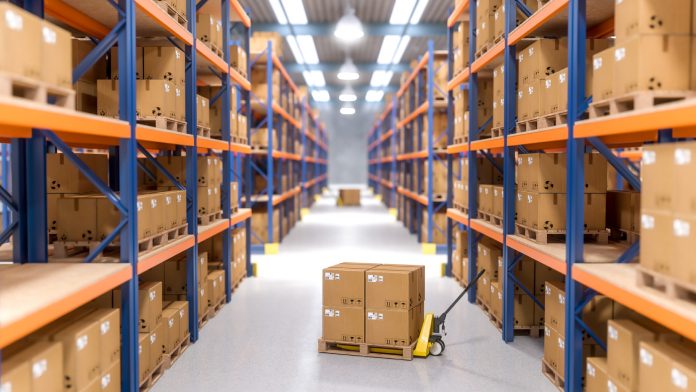Backorder Vs Out Of Stock: Essential Things To Know About It

Do you want to know about the difference between Back Order Vs Out Of Stock? If yes, you must get through the complete details to have a better concept of it. Most of the time, people are in confusion about backorder vs out of stock.
Backorder means stocks that are out of stock but will be again in stock very soon. Most of the time, the manufacturer of the product plans for a backorder. This is the basic concept about back order that you must know from your end.
In most cases, customers can buy back-order items. Out-of-stock items, conversely, can be the ones that have no existence in the warehouse, and stock re-ordering needs to be done. Your distribution channel needs to be well aware of it.
What Are The Difference Between Back Order vs Out Of Stock?

There are several points of difference between Backorder vs Out Of Stock. You need to understand the reality while attaining your needs with complete simplicity. Once you follow the correct methods, things can be easier for you.
1. Meaning & Concepts: Back Order Vs Out Of Stock
A backorder occurs when a customer places an order for a product that is temporarily unavailable or out of stock. But the seller accepts the order and promises to fulfill it as soon as the product becomes available again.
An item is considered out of stock when the seller currently has no inventory of that particular product. When the warehouse is devoid of any stocks or items present in it, then we call it out of stock. This is the primary point of difference between Backorder vs Out Of Stock.
2. Promise Of Delivery
With a backorder, the seller commits to delivering the product to the customer once it is back in stock. Even if there is a delay in the delivery, then the stocks will return to the customers. You should follow the correct strategy that can make things easier for you. Supply chain risk management will help you in meeting your needs.
Unlike a backorder, when a product is out of stock, the seller cannot immediately fulfill orders for that item. Customers may need to wait until the product is restocked. There is no promise for delivery of the stocks. It can keep on changing over time.
3. Customer Communication: Back Order Vs Out Of Stock
Customers are typically informed that the product is on back order, and they may be provided with an estimated restocking date. The order is usually accepted, and the customer is willing to wait for the item. Backorder vs. Out of stock can have an impact on your expectations.
Customers are informed that the product is currently unavailable and the order cannot be fulfilled immediately. Depending on the situation, customers may choose to wait for restocking or explore alternative options.
4. Timing & Order Acceptance
The order is accepted by the seller even when the product is not currently in stock. The commitment is to fulfill the order when the item becomes available. You should understand the scenario and the differences between the two concepts.
The order may not be accepted until the product is back in stock. Furthermore, the customer may be informed that the order cannot be fulfilled at the moment. However, things can turn out to be worse for you if the order is not accepted.
5. Inventory Management: Back Order Vs Out Of Stock
Back orders can be a part of a proactive inventory management strategy. It allows sellers to gauge demand and maintain customer satisfaction by fulfilling orders when stock is replenished.
Occurs when the demand for a product exceeds the available inventory, and the seller needs time to restock. You should be well aware of the situations that can make things easier for you in the long run.
How Do You Reduce The Pain Of Back Orders?
There are several ways you can reduce the pain in the back orders. You cannot just make your selection of the orders in the wrong direction. However, things can prove to be tougher for you in the long run, but you cannot achieve your requirements with ease.
1. Transparent Communication
Clearly communicate the status of back-ordered items to customers. Provide realistic estimates for when the product is expected to be back in stock and keep customers informed of any updates or changes to the timeline. You should ensure that the process of the communication must be clear and in good order.
2. Real Time Inventory Management
Implement a robust inventory management system that provides real-time updates on stock levels. This helps in accurate order fulfillment and reduces the likelihood of unexpected backorders. There are several factors and differences between Backorder vs Out of stocks that you must know from your counterpart.
3. Set Clear Expectations
Set clear expectations regarding shipping times and delivery dates during the ordering process. Clearly state whether a product is in stock or on back order, and provide estimated delivery times. However, your expectations must be clear if you want to get the stocks back for your own requirements.
4. Prioritize Customers Orders
Establish a system to prioritize backorders based on factors such as order date, customer loyalty, or order value. This can help ensure that high-priority customers receive their items first when stock becomes available.
5. Offer Alternatives
Provide customers with alternative products that are currently in stock and meet their needs. Offering substitutions or similar items can help prevent disappointment and provide customers with options.
Final Take Away
Hence, if you want to grow your business in the correct sequence. You must follow the mentioned process and know the difference between the concepts. Backorder vs Out Of Stock has several points of differences, and there lies the distinctions.
You can share your views and comments in our comment box. It will help us to know your take on this matter in the long run. Without knowing the ways, things can turn worse for you.
By employing these strategies, businesses can better manage backorders and enhance the overall customer experience during periods of product unavailability. Transparent communication and proactive measures are key to maintaining customer trust and satisfaction.
For The Best Business Related Information Click Below!!













